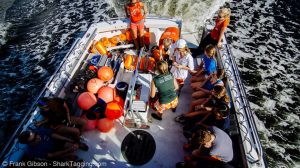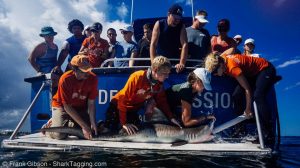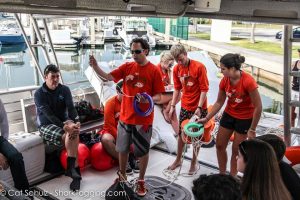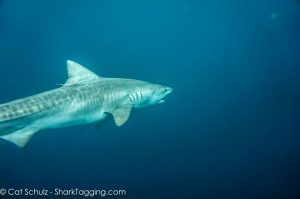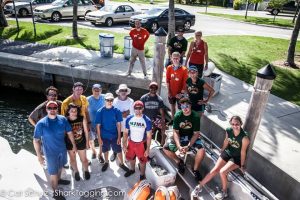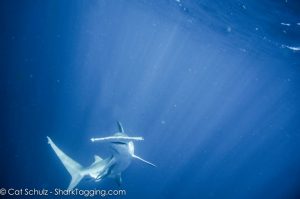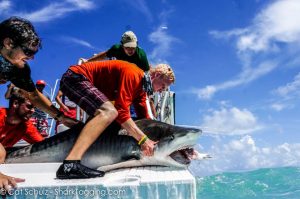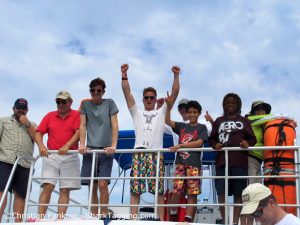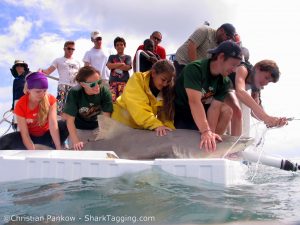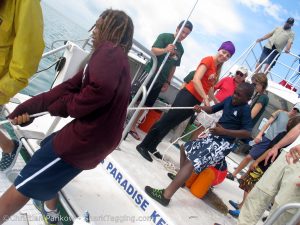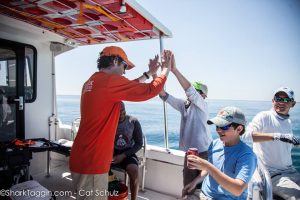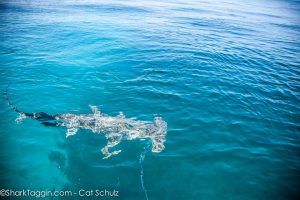Shark Tagging in West Palm Beach with American Heritage Academy
By Emily Rose Nelson, RJD Intern
I had been trapped in my office, with no sight of the ocean for over a month. If this trip had been one day later I might have gone crazy, I needed to get out on the water. That being said, I was even more excited than usual to go shark tagging. We met at RSMAS bright and early to load gear and somehow managed to fit all of our gear plus 4 people into my car. Before even leaving RSMAS I found barracuda scales in my hair, a sure sign that it was going to be a good day.
After an easy drive and an obligatory stop at the nearest Starbucks the team arrived at the dock in West Palm. This was only the second day trip we had run with Jim Abernethy’s Scuba Adventures (RJD runs a research expedition in the Bahamas to “Tiger Beach” with JASA) and we were eager to check out the new fishing site. After loading gear with the help of our guests for the day, American Heritage Academy, we were off.
The conditions were perfect; the ocean was flat calm and their wasn’t a cloud in the sky. We set all 30 lines and throughout the day did not pull up a single shark. However, everyone was still in high spirits. It was a beautiful day and we had time for a couple swimming breaks. We even had the chance to see a Loggerhead Sea Turtle swimming by. We set 6 additional lines with hopes that we would get lucky at the end.
On the 33rd line of the day someone yelled what we had been waiting to hear all day, “tension!” The RJD team waited in anticipation to confirm that there was a shark on the line and suddenly it surfaced. My all time favorite, a beautiful, juvenile tiger shark was on the end of the line. As we pulled her up it quickly became clear that she was a strong girl. After a couple of attempts, we safely restrained her on the platform in order to perform a quick work up. One of my favorite moments of the day was helping one of the high school students place a dart tag in the shark. It was his first time on a boat and excitement was pouring out of him. After we collected all the data from her, we safely released the shark and she swam off in excellent condition.
As we headed back to dock the RJD team started to clean up, feeling satisfied with the day. However, the fun was not over yet. A group of dolphins decided to hitch a ride with us. They were jumping and playing at the bow of the boat for quite some time. While I am not much of a “dolphin person” I can’t help but smile whenever this happens, it was the perfect way to end a great day on the water!

